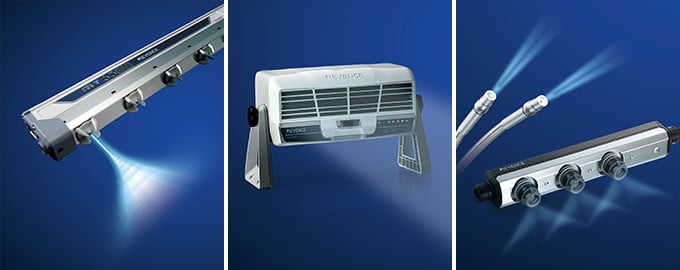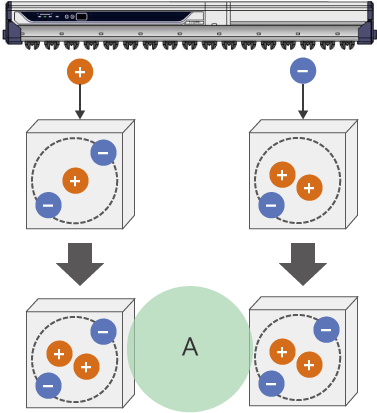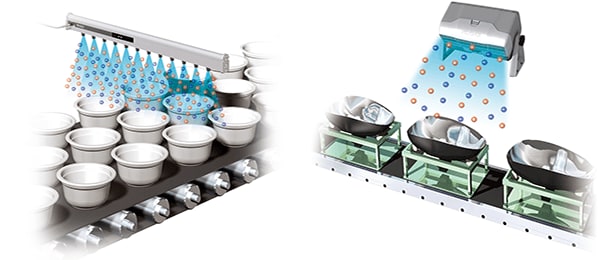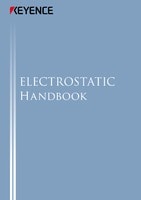Static Eliminator (Ionizer)
As explained earlier, anything with static electricity is in a state where positive and negative charges are imbalanced. A static eliminator (ionizer) changes this to a balanced state, or more specifically, an electrically neutral state.

Principle of static elimination using a static eliminator (ionizer)
How do static eliminators (ionizers) neutralise electrical imbalances? The answer is ions. Static eliminators (ionizers) generate ions that strike the target, eliminating its static electricity.
What are ions? You may have heard of ions but may not know exactly what they are.
Put simply, ions are electrically charged particles.
For example, waterfalls and fountains produce sprays of water. These sprays of water work on air and generate ions. Static eliminators (ionizers) apply electrical force to the air to generate ions. These ions, electrically charged particles, strike the charged object to neutralise it.
As shown in the figure below, positive ions generated by the static eliminator (ionizer) strike the negatively charged object (the left side in this figure). The positive electricity increases, balancing out the negative electricity. Negative ions strike the positively charged object (the right side in the figure below), balancing it.
- Static Eliminator (Ionizer)

- A: Electrically neutralised
In this balanced state, there is no static electricity. Static eliminators (ionizers) can generate positive and negative ions, allowing them to eliminate static electricity from targets whether they is positively or negatively charged.

- [Features]
- Simply installing a static eliminator (ionizer) is enough to eliminate static electricity.
Effective with conductors and insulators - [Precautions]
- Periodic maintenance is necessary.






